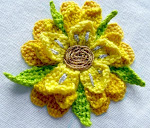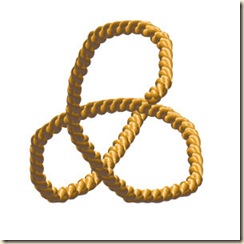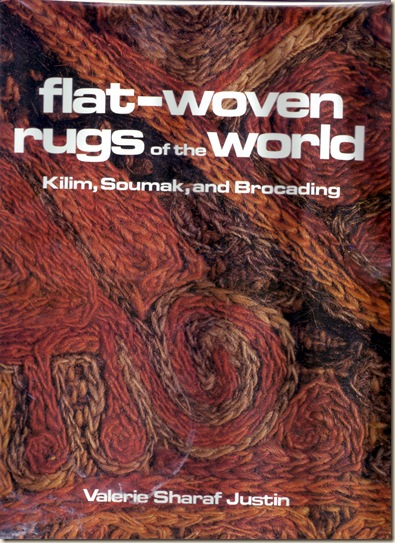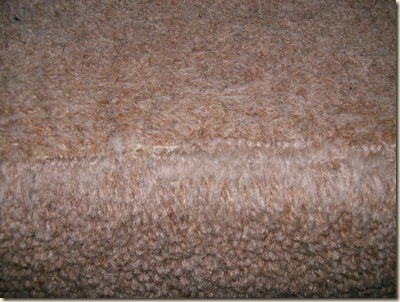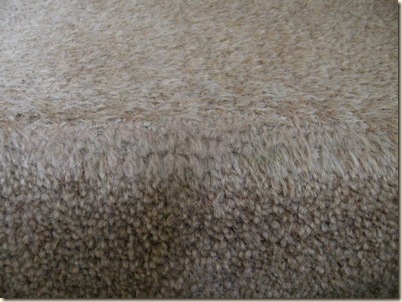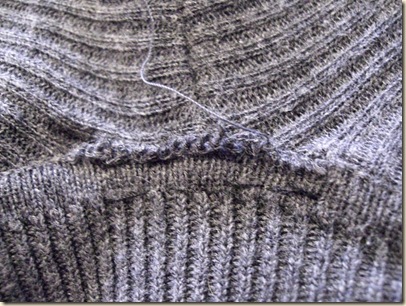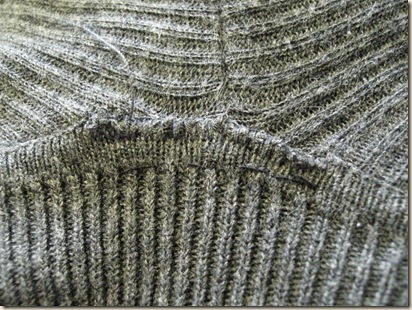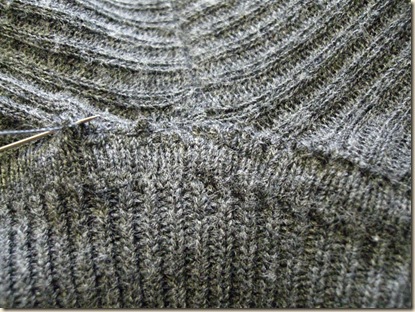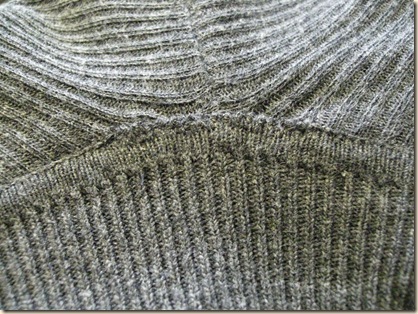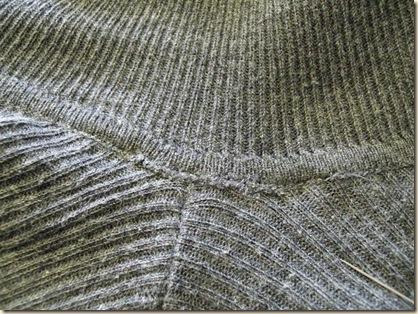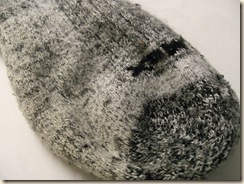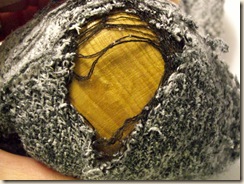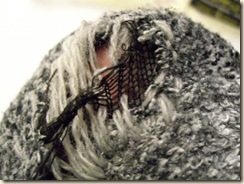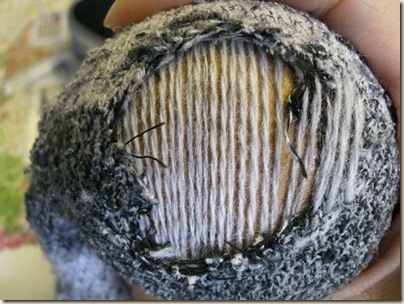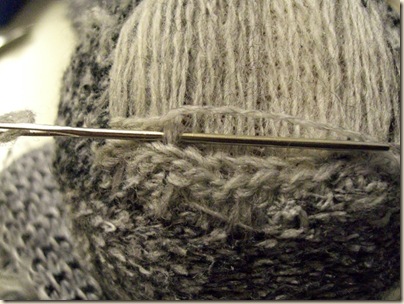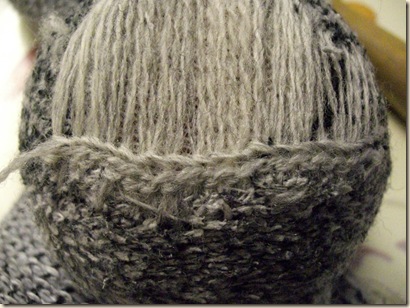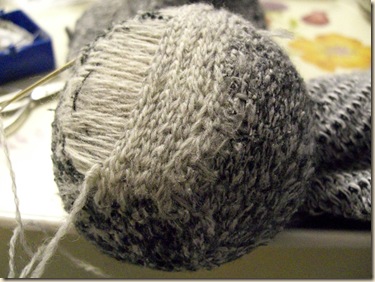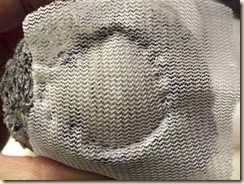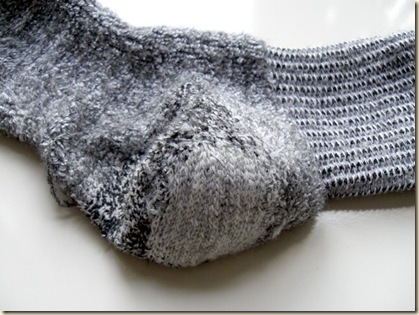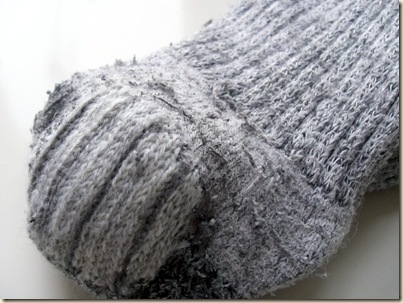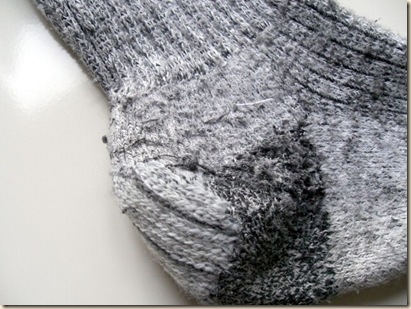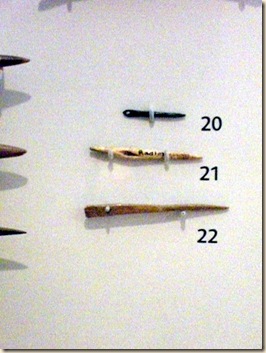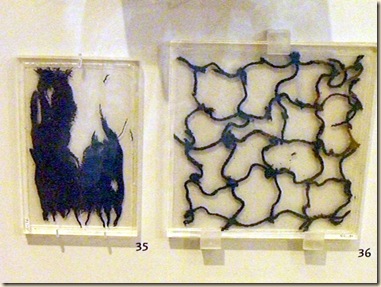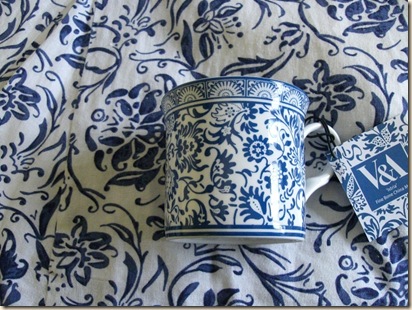I continue to be swamped with editing the manuscript I told you about…
However, I want to take this opportunity to explain some interesting further research I’ve managed to do with regard to Plaited Braid Stitch (PBS) and how I have related that to a mending dilemma.
Some more about Plaited Braid Stitch
In my humble view, the real reason why Plaited Braid Stitch has eluded people for 300 years is because the essential path the thread takes to form one complete stitch is this shape.
This shape happens to be a formal ‘knot’ pattern referred to as a Triquetra (I think I mistakenly referred to ‘Triquestra’ before, as I had confused it with the spelling of ‘Triskellion’).
A Triquetra is essentially a never ending knot with three points and 3 crossings. This configuration first appears in English decorative arts in the early Christian Celtic times, 7th Century to be precise, but much earlier in Ireland.
From this starting point I have been researching knots generally and other related crafts that incorporate this formation and as a result I have been reading about Soumak Weaving.
The detailed ins and outs, or rather the ‘overs & unders’ of this research journey, I am afraid I don’t have time to go into at the present time but save to say, Soumak, also known as ‘Soumak brocading’ is Near Eastern in origin and was introduced to England by the Vikings.
However, there is also reference to ‘Saxon brocading practices’, and ‘gold brocading over tablet woven strips’.
Soumak is essentially very early tapestry weaving and embroidery rolled into one. Its a fascinating subject but I haven’t managed to find that many books about it as yet. The only book I have at the moment is this one:
This is a book typical of its time, I am afraid to say: great front cover, but the pictures inside are small and mainly black and white.
This ancient form of weaving is very creative and most interestingly this technique is in evidence on the Sweetbag I am studying, in the form of the woven pattern created round the tassels. When I first saw a close-up of those tassels I thought they were embroidered in a ‘corded’ way but the book Sweetbags identifies this type of embroidery as Soumak brocading.
As I said before, I am pretty busy with something unrelated that I must finish, however, I needed to mend a few items around about and oddly enough, I have managed to incorporate Soumak weaving into the mending of a mountaineering sock (!) which I detail in the second half of this post.
First things first…March is for Mending!
Mending Rugs
After looking at so many pictures of handmade colourful rugs and saddlebags I decided to get back to work on my own stair carpet. For this repair I used the standard embroidered ‘Velvet Stitch’, as I couldn’t access the back of the rug.
I managed to match the colour at my LYS quite well, from their wide selection of tapestry wools. I divided the yarn in 2 and knelt on a gardening pad because it takes a while to complete a small section and your knees end-up quite numb!
The first two pictures are taken at night – and the last one during the day.
I had one more row to do at this stage..
Once the stitching is complete, you then trim the section of large loops carefully so they are roughly the same length as the strands of the rug. (Berlin Woolwork embroidery incidentally is a similar idea, but in that instance the embroidery was sent away to be expertly trimmed and ‘sculpted’ by craftsmen.)
The real challenge here was trying to make ‘man-made’ needlework look like a machine-made rug as well as trying to be as hard-wearing. I’ve carried out this kind of repair before, so I knew that the stitch was fit for purpose.
I really like Velvet Stitch and think its a great stitch to embroider pet portraits with. I’ve yet to try that but I was encouraged by a book I found recently in the library on the subject of ‘Vintage Bags’, in it was a lovely teddy bear stitched this way.
Don’t you find once you start mending things all manner of items suddenly fall under the radar??… and so it was time eventually to tackle one of my favourite roll-necks.
Mending Knitted Seams
I don’t have a serger, so again, I had to find a suitable hand-stitching technique that could mimic a machine-made article.
The seam in question is the one where the neck meets the shoulder. My main problem here was to preserve the ‘stretch’ in the knitted fabric, my solution was to use tiny back-stitches referred to as Prick Stitch, after a loose row of Buttonholing. Prick Stitch is very strong, quite invisible and commonly used to insert zippers by hand.
Below is the completed repair to the seam, the right way up.
I try to make my mending as invisible as possible but at the same time not become too obsessive.
Then I realised that I had another mending job that had been waiting for my attention for a mere 2 months in a drawer, out of sight but not out of mind.
Darning Socks with Soumak Weaving
This job was particularly difficult because not only did I have to compete with the look of the miniscule machine-made weave again, but added to that, I needed to think of things like strength and comfort.
It occurred to me that I could maybe use SOUMAK weaving to darn this mountaineering sock? This way the darned patch would really last and added to that, I decided to some insert nylon mesh between 2 layers of Soumak, because on a close inspection of how the sock was manufactured, I could see the wool had been woven into a similar black nylon mesh foundation. So for the rest I’ll just show you the pictures…
Here is the beloved globe-trotting sock…
and here is the, um, rather large hole I needed to fix….
This is the manufactured nylon mesh ‘reinforcement layer’ that I mentioned….
Here are the warp threads I created to begin my repair. Notice how they are anchored to the inside rim of the hole. The 2 layers of weaving will encase the jagged edge of the hole and be woven into it.
Soumak weaving incorporates a lot of neat stitches but for this sock I am using a simple chain stitch that picks up 2 warp strands each time…
As intricate as it looks, it is really quite fast to do. Just like with any weaving, at the end of a weft row, you push the stitches down to compact them.
I’m using a wooden mushroom to keep the work taut and 2-ply vintage Jaeger wool…
Next is the nylon mesh insert, tacked, then later trimmed to size.. (yes, I keep the odd old laundry bag !)
Below is the finished inside of the sock.
Then I turned it round the right way and got to work on the outside. For that I decided to be a bit more creative and incorporated stripes and worked vertically, which meant my warp threads had to be horizontal this time. (On the sweetbag the warp threads round the tassel former are also horizontal.)
Finally here is the finished sock…
Thankfully the alarming hole was not on the sole but up the heel.
It seems to me that whatever we learn in terms of decorative needlework probably had its origins in more utilitarian realms, like say fishing nets and the construction of clothes and in this case, carpets and saddlebags. I’m just really glad I found a way to reinforce the socks that will remain comfortable for the wearer and hopefully means I won’t have to mend them again in a hurry!!
*******
Here are some pictures I took of ancient needlework items from the Ashmole’. If you move your mouse pointer over them, you can see what they’re called. The Neolithic belt fragment below was discovered in what is now Switzerland.
The belt fragment is on the left, on the right is a Neolithic knotted fishing net.
*******
Oh, one more thing….look what I found at my local ‘recycling’ shop….another (not so revolting) skirt !!!
Goodness, is that the time !!!!

